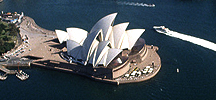SA government says shipbuilding secured at Osborne, but opposition labels future ships a 'thought bu
· In short: The SA premier says continuous shipbuilding has been guaranteed at Adelaide's Osborne shipyard, with the federal government revealing its blueprint for Australia's surface navy fleet.
· The SA opposition has described aspects of the proposal as a "thought bubble" intended to deter talk of a "valley of death".
· What's next? The government says the Osborne workforce will have to double in less than three years to meet demand.
The South Australian government says a long-anticipated naval overhaul will secure continuous shipbuilding at Adelaide's Osborne shipyard — but the state opposition has expressed doubts it will stave off a "valley of death".
The federal government today unveiled plans for an $11 billion investment that would see the acquisition of new general-purpose frigates built overseas, as well as Hunter-class frigates built at Osborne.
Under the plan, the final Hunter frigate would be delivered by 2043, but construction would then begin on new air warfare destroyers, to replace the current Hobart-class.
SA Premier Peter Malinauskas today met with BAE workers at the Osborne yard, where Hunter-class frigates are already being built.
He said while the federal plan reduced the number of locally built Hunter-class vessels from nine to six, it would nevertheless secure ongoing work.
"[The workers] are very satisfied that the federal government has now made the commitment that we've been waiting — it feels like too long — for," he said.
"Today's announcement takes major surface ship, tier one building in South Australia into the 2060s.
"The Hunter-class alone takes us into the 2040s."
A decision on the design of those ships will be made in 2035.
An artist’s impression of the future Hunter-class frigate.(Supplied: BAE Systems)
"The plan was always to build nine ships, three blocks of three," Mr Malinauskas said.
"What we're seeing today is an announcement to build six in the anti-submarine category and then beyond that the anti-warfare category so the number is the same, it just continues into the future.
"It's about a ship coming out of this shipyard every two to three years, forevermore."
But SA Opposition Leader David Speirs said the reduction to six Hunter-class frigates would result in fewer jobs and less economic activity in South Australia.
He said he remains skeptical about promises of continuous shipbuilding — particularly the proposal to follow the frigate build with construction of air warfare destroyers.
"There is little certainty as to what these ships in the 2030s will look like," Mr Speirs said.
"They are a thought bubble that has been put out there by the federal government as a way of trying to reassure South Australians that we won't fall into that valley of death."
Workforce 'has to double'
Mr Malinauskas said there had been commitments from both sides of politics at federal level to keep shipbuilding going.
"If we just remove the partisan politics for a moment, what we've really got is a federal government and a federal opposition who want to see continuous shipbuilding at Osborne," he said.
"I'm confident that whether we've got a federal government that's Liberal or Labor in charge in Canberra, we now have bi-partisanship on the value to our nation of having continuous shipbuilding."
Under the AUKUS deal, manufacturing of nuclear submarines is scheduled to begin at Osborne by the end of the decade.
The federal government has said the surface ships alone will create 2,500 jobs in Adelaide, and Mr Malinauskas said ensuring there are enough skilled workers to fill the jobs is a major priority.
"We are no longer going to be sitting around wondering where is the work coming from — our only concern is how are we going to generate the workforce to do the work into the future," he said.
"The workforce that BAE has in South Australia now has to double in the next two-and-a-half years."








